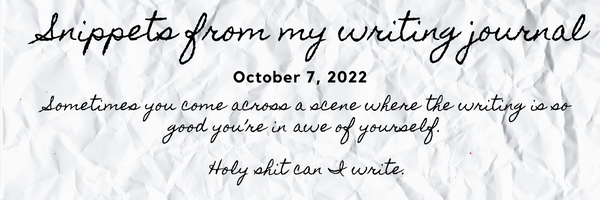What you're in for
Why I am doing this
The original version of the book was called The Curses of Being a Side Dish, and it was completed in 2012, queried, and then drawered until 2017 when I started writing again. I rewrote what I had, wrote new material, got feedback on my synopsis from an editor through SCBWI, rewrote it again, sent it out to betas, revised based on that feedback, and started querying in 2021. I know I tried different revision advice and practices I gathered from podcasts, books, webinars, and seminars, but I didn’t document anything. I do know that I had a hard time wrapping my head around the advice I received. The advice felt vague and opaque, and I had a hard time creating actionable tasks from it. Anyway, when I went to revise Girls to the Front, I had no idea what worked for me. Luckily, my writing group inspired me to keep a writing journal this time around. My hope with this revision blog is to be transparent about what I do and learn through this revision so that I and other authors may find a revision process that works for them. So here’s your official welcome to the Girls to the Front revision blog. The statisticsMany authors don’t readily reveal this information, and as an author navigating writing and revising (and really, the publishing world), this is something I'd like to know. Maybe my mind is more analytical than others.
August 1, 2022 – October 25, 2022 I worked within Scrivener and excel to revise Girls to the Front. I started struggling with the outline and arrangement of scenes and chapters around Chapter 14. Around chapter 19, I started feeling like the pacing was off, and it bugged me enough that I create spreadsheets to start tracking topics, themes, and character appearances, chapter word counts, scene word counts, and scene counts per chapter. On October 22, 2022, I started to forego revision altogether and just complete tracking the charts. I also wrote a synopsis for each scene on the little notecards in Scrivener, which I compiled into an outline. What I learned
So, I got easily distracted and this way to rework the plot broke down pretty fast. This may be a better pre-first-draft exercise for me. I have no idea what to do about my charts that tracked themes, characters, misc. topics, and word and scene counts. I think this will be revealed as work later.
One last note...
0 Comments
Leave a Reply. |
AuthorSarah Hawkins is a geek for the written word. She's an author and freelance editor who seeks to promote and uplift the authors around her. ArchivesCategories
All
|








 RSS Feed
RSS Feed
